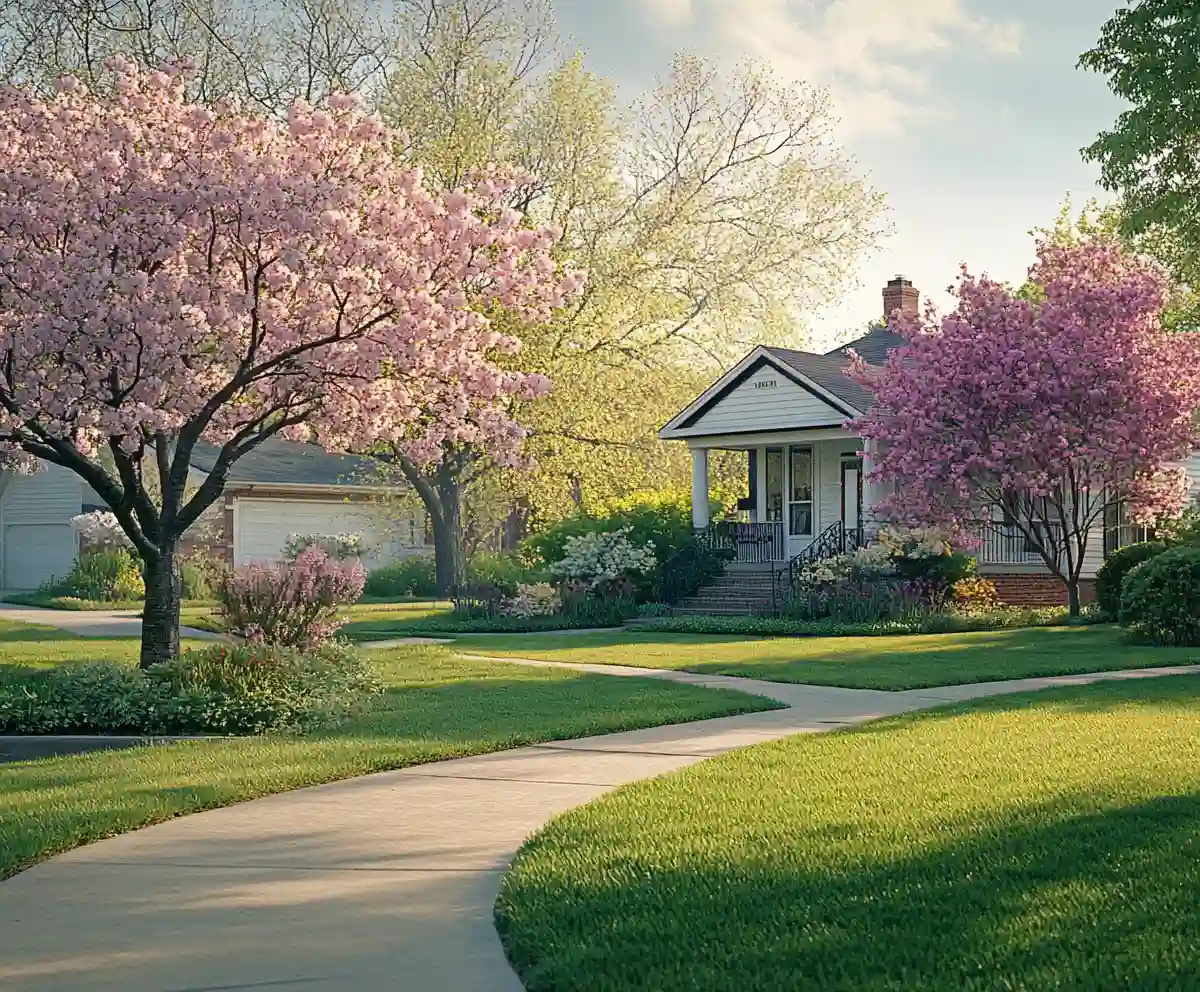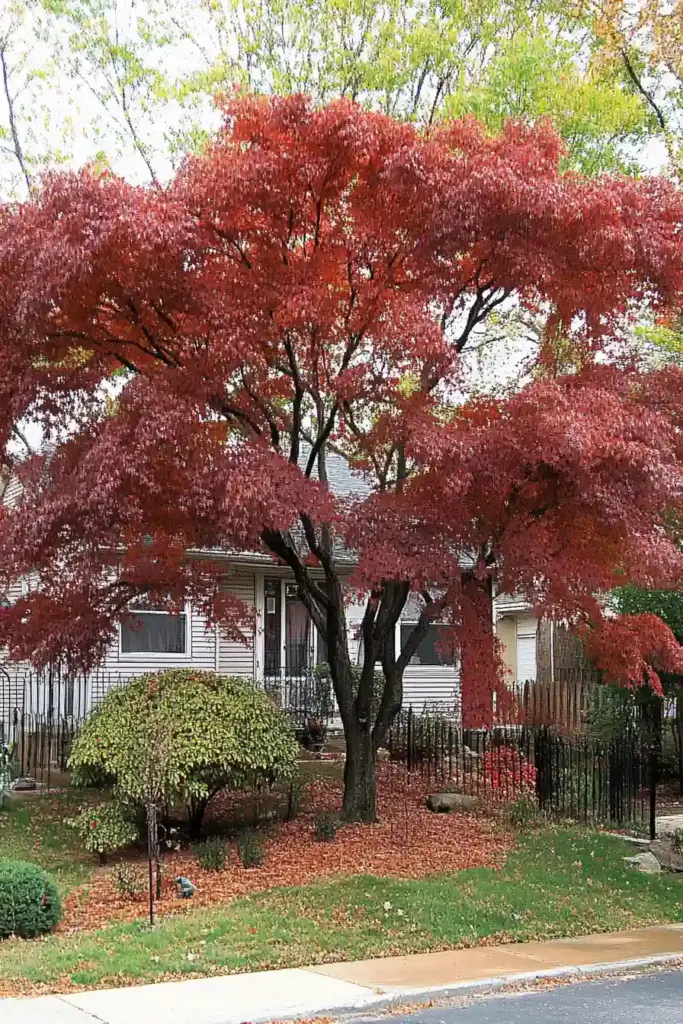Choosing the best trees for your front yard isn’t just about aesthetics—it’s about finding trees that fit your lifestyle, climate, and maintenance goals. A thoughtfully chosen tree can add structure, color, privacy, and even wildlife to your landscape. But here’s the good news: you don’t have to settle for fussy or high-maintenance varieties. In fact, there are stunning, low-effort options that practically thrive on their own.
In this guide, we’ll explore 10 of the best trees for front yards—each selected for its charm, resilience, and ease of care. Whether you’re seeking spring flowers, autumn foliage, or evergreen structure, there’s something here for every yard.
1. Japanese Maple (Acer palmatum)
If you want an elegant, compact tree that delivers year-round beauty, the Japanese Maple is a front yard favorite. Known for its artistic branching and ever-changing foliage, this tree adds a touch of zen to any landscape.
Why It’s Great for Front Yards:
- Offers dramatic seasonal color—from deep reds in spring and summer to fiery oranges and scarlets in fall.
- Compact size makes it ideal for smaller yards or near walkways.
- Distinct leaf shapes and colorful bark (especially varieties like ‘Coral Bark’) provide winter interest.
Quick Care Guide:
- Zones: 5–9
- Light: Prefers partial shade but can handle full sun in cooler climates
- Soil: Moist, well-drained, slightly acidic
- Mature Size: 15–25 feet tall and wide (depending on cultivar)
- Deer Resistant: ❌ No
Pro Tip:
Look for cultivars like ‘Bloodgood’ or ‘Crimson Queen’ for reliable color and shape. These trees also pair well with low-growing perennials or groundcovers for a layered landscape look.
2. Dogwood (Cornus spp.)
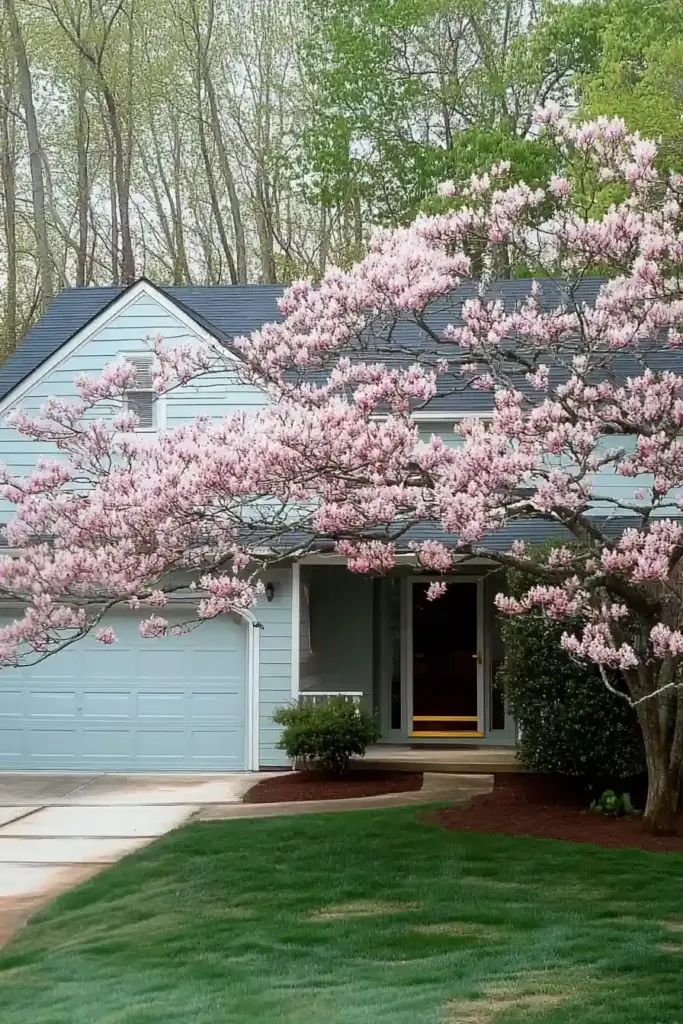
Few trees can match the delicate charm of a Dogwood in full bloom. With their layered branching, soft petals, and year-round interest, Dogwoods are a classic choice for homeowners who want beauty across all seasons.
Why It’s Great for Front Yards:
- Springtime brings a stunning display of white or pink flowers.
- In fall, the foliage turns rich shades of red and purple, often accompanied by bright red berries.
- Naturally symmetrical shape offers elegance without constant pruning.
Quick Care Guide:
- Zones: 5–9
- Light: Partial shade to full sun
- Soil: Moist, well-drained, rich in organic matter
- Mature Size: 15–30 feet tall, 15–25 feet wide
- Deer Resistant: ❌ No
Pro Tip:
‘Cherokee Brave’ boasts bold pink blooms and better disease resistance. For something unique, try the Kousa Dogwood, which blooms later and produces berry-like fruit in late summer.
3. Crape Myrtle (Lagerstroemia indica)
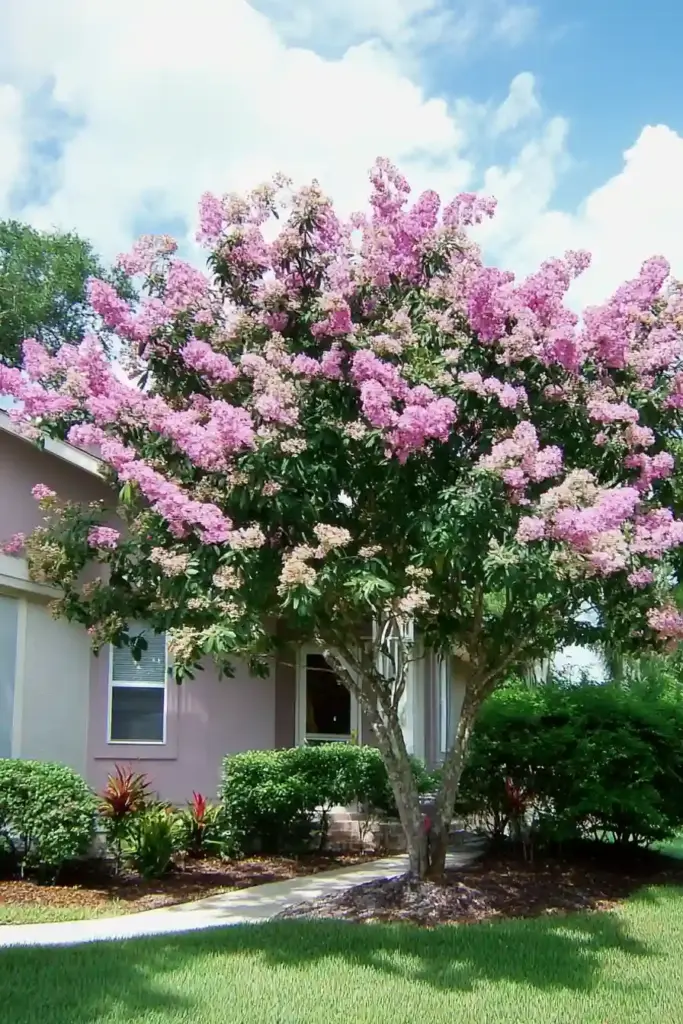
If you’re after color that lasts all summer long, the Crape Myrtle delivers in spades. With vibrant blooms, graceful form, and peeling bark for winter texture, this tree is a multi-season superstar—especially in warmer climates.
Why It’s Great for Front Yards:
- Long-lasting flowers in shades of pink, purple, red, or white.
- Adds architectural interest even in winter thanks to its smooth, exfoliating bark.
- Tolerates heat and drought like a champ once established.
Quick Care Guide:
- Zones: 6–10
- Light: Full sun is a must for strong flowering
- Soil: Well-drained, slightly acidic to neutral
- Mature Size: 15–25 feet tall, 6–15 feet wide (varies by variety)
- Deer Resistant: ✅ Yes
Pro Tip:
Look for dwarf or semi-dwarf cultivars if space is limited. Also, avoid heavy pruning—Crape Myrtles bloom on new wood, so light shaping is all they need to thrive.
4. Dwarf Alberta Spruce (Picea glauca ‘Conica’)
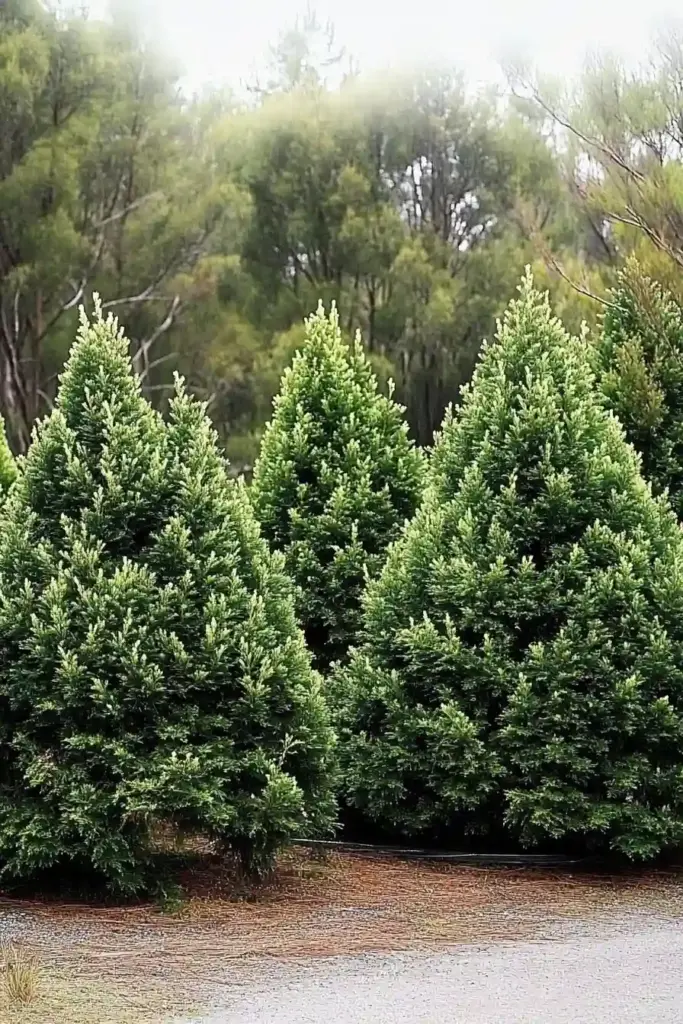
If you’re into clean lines, symmetrical shapes, and year-round greenery, the Dwarf Alberta Spruce is a front yard gem. This slow-growing evergreen offers a classic conical shape that needs virtually no pruning to look neat and sculpted.
Why It’s Great for Front Yards:
- Compact and formal appearance fits beautifully near entryways or along walkways.
- Evergreen needles provide structure and color through all four seasons.
- Extremely low maintenance once established.
Quick Care Guide:
- Zones: 2–6
- Light: Full sun to partial shade
- Soil: Well-drained, slightly acidic
- Mature Size: 10–13 feet tall, 7–10 feet wide
- Deer Resistant: ❌ No
Pro Tip:
Give this tree some breathing room for airflow—tight, humid conditions can lead to spider mite issues. Mulching around the base helps conserve moisture and maintain soil health.
5. Flowering Cherry (Prunus spp.)
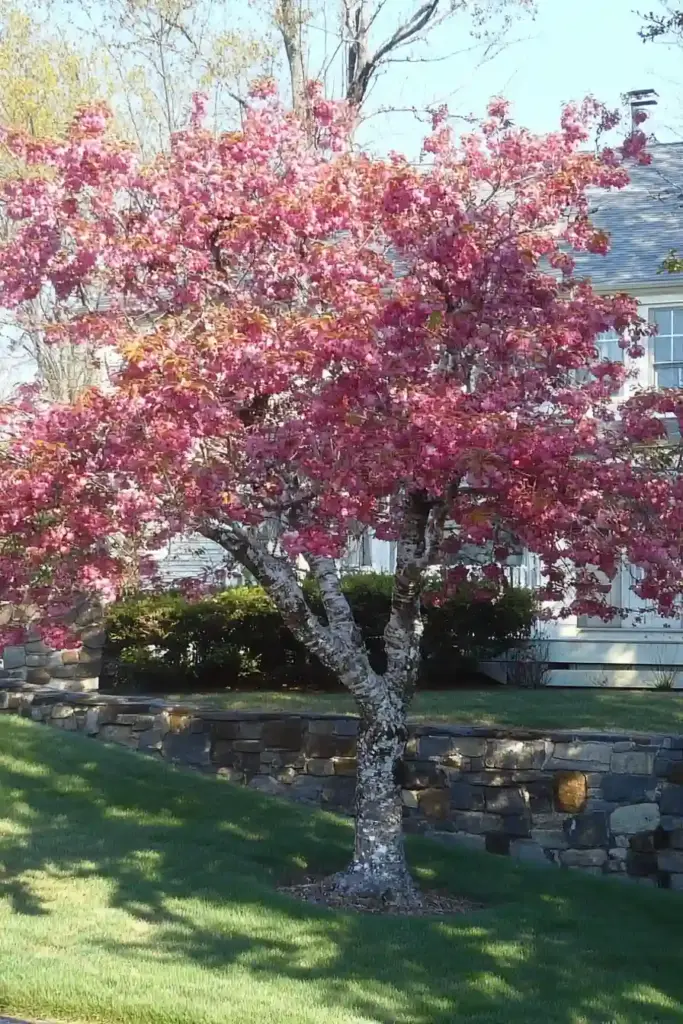
Nothing says spring quite like a Flowering Cherry in full bloom. With its soft pink or white blossoms and graceful branching, this tree transforms your front yard into a postcard-worthy scene almost overnight.
Why It’s Great for Front Yards:
- Explodes with delicate blossoms in early to mid-spring, often before the leaves emerge.
- Adds a sense of romance and whimsy to your landscape.
- Some varieties offer bronzy new foliage and colorful fall leaves for added interest.
Quick Care Guide:
- Zones: 5–8
- Light: Full sun
- Soil: Well-drained, moist, slightly acidic
- Mature Size: 15–30 feet tall, 15–25 feet wide (varies by species)
- Deer Resistant: ❌ No
Pro Tip:
Look into cultivars like ‘Kwanzan’ for fluffy double blooms or ‘Yoshino’ for classic cherry blossom vibes. Be sure to plant it in a location with good air circulation to minimize disease risk.
6. Redbud (Cercis canadensis)

Looking for a splash of unexpected color in early spring? The Redbud tree delivers with vivid purple-pink blossoms that pop before the leaves even unfurl. Its heart-shaped foliage and graceful form make it an eye-catching centerpiece in any front yard.
Why It’s Great for Front Yards:
- Produces clusters of small, rosy flowers along bare branches in early spring.
- Compact growth habit works well in small spaces or as an accent near pathways.
- Adds interest with unique foliage—some varieties even have burgundy or golden leaves.
Quick Care Guide:
- Zones: 4–9
- Light: Full sun to partial shade
- Soil: Well-drained; adaptable to various types
- Mature Size: 20–30 feet tall, 15–25 feet wide
- Deer Resistant: ❌ No
Pro Tip:
For something a little different, try the ‘Forest Pansy’ Redbud—it boasts deep purple leaves that contrast beautifully with its spring flowers. Redbuds are also pollinator-friendly, attracting early bees and butterflies.
7. Magnolia (Magnolia spp.)
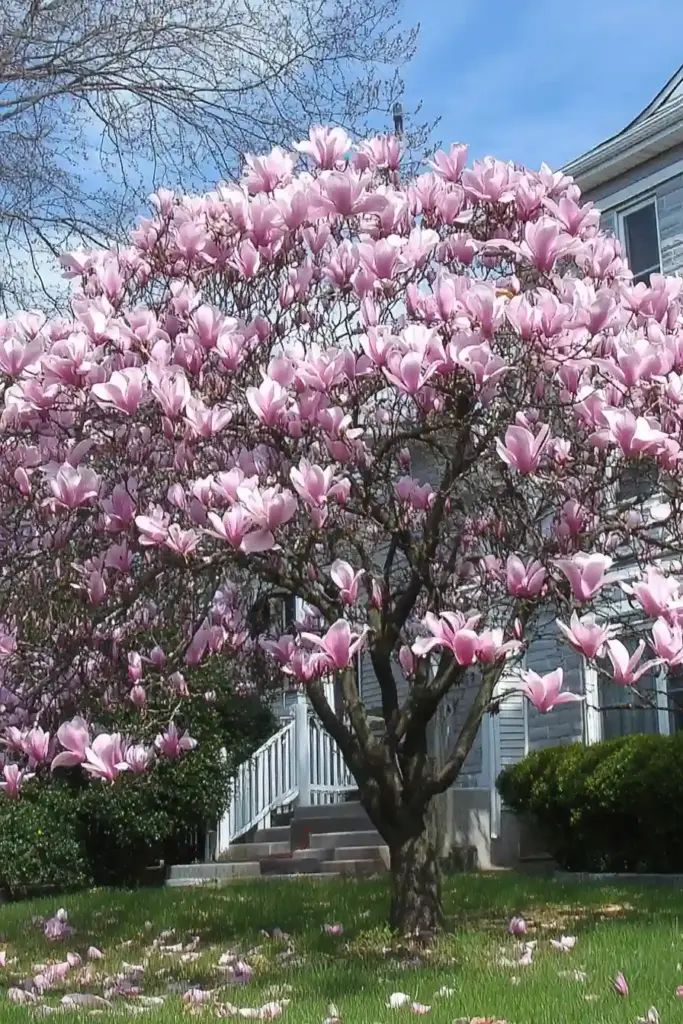
Few trees make a statement quite like the Magnolia. Whether you choose a stately southern variety or a compact hybrid, Magnolias bring bold, fragrant blooms and glossy foliage that create instant front yard drama—in the best way.
Why It’s Great for Front Yards:
- Large, fragrant flowers in white, pink, or purple steal the spotlight each spring (and sometimes again in summer).
- Glossy, evergreen or semi-evergreen leaves provide structure and year-round greenery.
- Wide variety of species and cultivars—from towering trees to modest ornamental forms.
Quick Care Guide:
- Zones: 3–9 (varies by species)
- Light: Full sun to partial shade
- Soil: Rich, well-drained, slightly acidic
- Mature Size: 20–80 feet tall, 10–40 feet wide (choose wisely!)
- Deer Resistant: ❌ No
Pro Tip:
For smaller yards, go for varieties like ‘Little Gem’ or ‘Jane’ Magnolia—they’re much more manageable but just as breathtaking. Give them room to spread out, and avoid planting near sidewalks or driveways where flower drop may become messy.
8. Crabapple (Malus spp.)
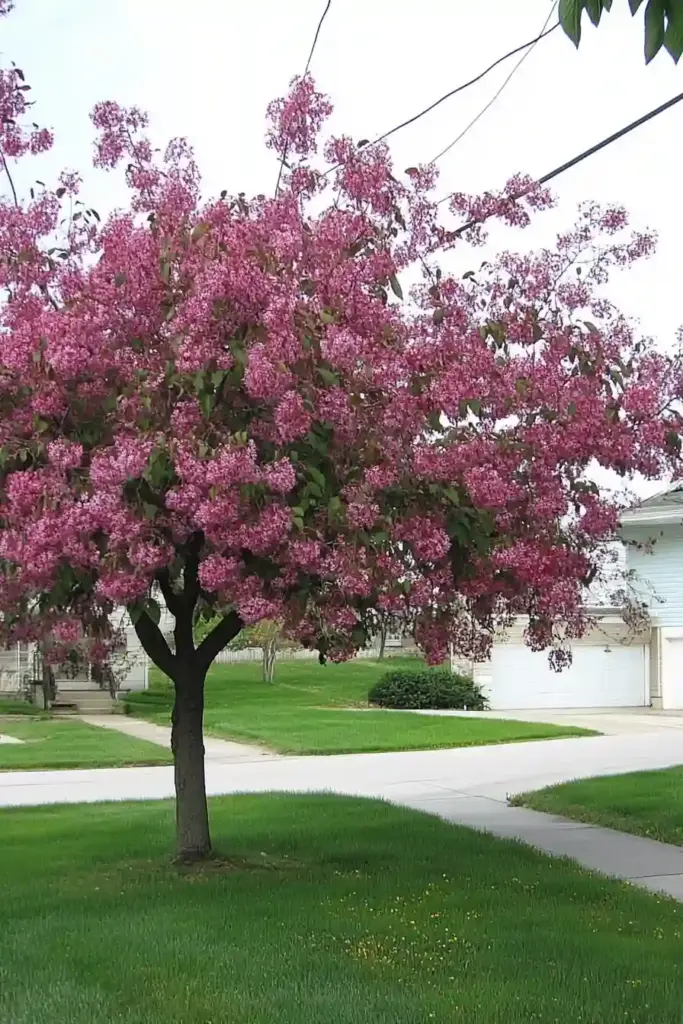
Don’t let the name fool you—Crabapple trees are anything but cranky. These charming ornamentals offer a profusion of spring flowers, vibrant fall color, and tiny fruits that wildlife adore. Plus, they come in a wide range of shapes and sizes, perfect for customizing your curb appeal.
Why It’s Great for Front Yards:
- Puts on a spectacular spring bloom show in pink, white, or red.
- Produces small, colorful fruit that attracts birds and adds visual interest in autumn.
- Compact cultivars are ideal for limited spaces or under utility lines.
Quick Care Guide:
- Zones: 4–8
- Light: Full sun
- Soil: Moist, well-drained, slightly acidic to neutral
- Mature Size: 15–25 feet tall, 15–25 feet wide (varies by cultivar)
- Deer Resistant: ❌ No
Pro Tip:
Choose disease-resistant varieties like ‘Prairifire’ or ‘Sugar Tyme’ for low-maintenance beauty. These trees are pollinator-friendly and play well with flowering perennials or groundcovers underneath.
9. Serviceberry (Amelanchier spp.)
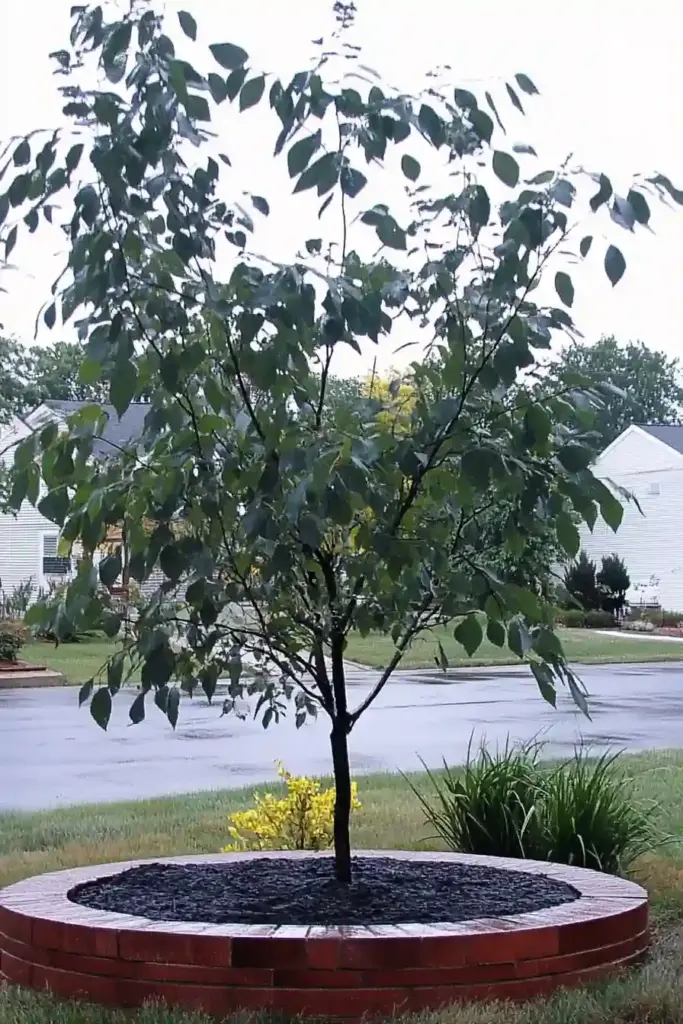
If you’re after a tree that does a little bit of everything, the Serviceberry is a total MVP. This underused gem brings delicate white blooms in spring, tasty summer berries, brilliant fall color, and a graceful form that looks great even in winter.
Why It’s Great for Front Yards:
- Offers year-round interest—flowers, fruit, foliage, and bark.
- Edible berries attract birds (and can be used in pies and jams!).
- Compact size works well for tight spaces or layering in multi-tree landscapes.
Quick Care Guide:
- Zones: 3–9
- Light: Full sun to partial shade
- Soil: Moist, well-drained, slightly acidic to neutral
- Mature Size: 15–25 feet tall, 15–25 feet wide
- Deer Resistant: ❌ No
Pro Tip:
Look for multi-stemmed forms like ‘Autumn Brilliance’ if you love fall color. Plant near a seating area to enjoy birdwatching in summer and colorful foliage in autumn.
10. Eastern Red Cedar (Juniperus virginiana)
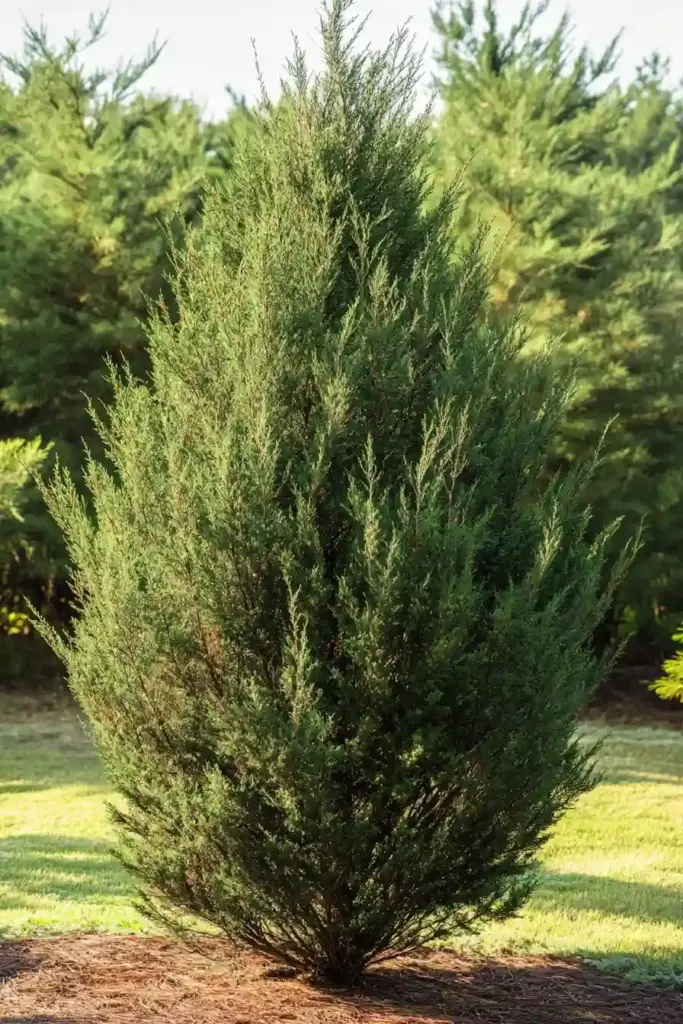
Need a tough, year-round tree that brings structure, privacy, and greenery no matter the season? The Eastern Red Cedar is your go-to. This native evergreen thrives in challenging conditions and doubles as a natural screen or windbreak.
Why It’s Great for Front Yards:
- Offers dense, green foliage all year long—ideal for privacy or as a backdrop to other plants.
- Extremely tolerant of poor soil, drought, and urban conditions.
- Produces tiny blue berries that birds love (especially in winter).
Quick Care Guide:
- Zones: 2–9
- Light: Full sun
- Soil: Well-drained, adaptable to poor or rocky soils
- Mature Size: 40–50 feet tall, 8–20 feet wide
- Deer Resistant: ✅ Yes
Pro Tip:
For smaller yards or tighter spaces, consider the ‘Taylor’ cultivar—it has a narrow, columnar form perfect for accent planting. Just be cautious planting near apple trees, as Red Cedars can host cedar-apple rust.
🌟 Final Thoughts: Choosing the Best Tree for Your Front Yard
When it comes to boosting curb appeal, creating a welcoming atmosphere, and even supporting local wildlife, planting the best trees for your front yard is one of the smartest landscape investments you can make. From the elegance of the Japanese Maple to the rugged charm of the Eastern Red Cedar, there’s a tree for every space, climate, and style.
As you make your choice, consider your yard’s sun exposure, soil conditions, and how much maintenance you’re comfortable with. Want year-round color? Go for Serviceberry or Crape Myrtle. Prefer evergreen structure? Dwarf Alberta Spruce or Red Cedar has your back.
No matter what you pick, one thing’s certain: the right tree can transform your front yard from ordinary to unforgettable.
❓ Frequently Asked Questions About the Best Trees for Front Yard Landscaping
🌿 What is the best low-maintenance tree for a front yard?
The Crape Myrtle is one of the best low-maintenance trees for front yards. It thrives in full sun, requires minimal pruning, and offers vibrant blooms all summer. Other great options include Dwarf Alberta Spruce and Eastern Red Cedar.
🌞 Which trees grow well in full sun?
Several trees on our list love full sun, including Flowering Cherry, Crabapple, Redbud, and Crape Myrtle. These trees not only tolerate but thrive in sunny front yard spaces, offering color and beauty throughout the seasons.
🏡 What small trees are good for front yards?
If you have a smaller front yard, consider compact trees like Japanese Maple, Serviceberry, or Dwarf Alberta Spruce. These trees stay modest in size and provide multi-season appeal without overwhelming the space.
🍂 What tree has the best fall color?
The Japanese Maple and Serviceberry both shine in fall, displaying brilliant shades of red, orange, and gold. They’re perfect for homeowners who want a show-stopping seasonal display right outside their front door.
🐦 Are there trees that attract birds and pollinators?
Yes! Serviceberry and Crabapple trees produce berries that birds love, while Redbuds and Dogwoods attract bees and butterflies in spring. These trees are ideal if you’re aiming to support local wildlife and create a vibrant, eco-friendly yard.

